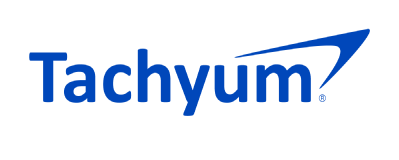AI Market Correction or Efficiency Revolution? How DeepSeek and Tachyum Are Redefining the Future of Artificial Intelligence
Industry experts suggest that the decline in stock prices of U.S. AI companies reflects a correction of market enthusiasm rather than a shift in fundamentals and is unlikely to impact long-term valuations. There are multiple reasons for this. The AI hardware market is experiencing shortages, driving up prices for components like DRAM and leaving many contracts unfulfilled.
The Capital Expenditure (CAPEX) of U.S. hyperscale and AI companies remains steady, driven by consistent demand and monetization. AI is enhancing efficiency across industries, driving financial returns that sustain strong demand. Lowering the cost of AI—much like the shift from mainframes to minicomputers and PCs—has not shrunk the market but has significantly expanded it. Microsoft’s CEO referencing Jevons Paradox was no coincidence. The paradox is named after William Stanley Jevons, a 19th-century English economist, who observed that technological improvements that increased the efficiency of coal use led to the increased consumption of coal in a wide range of industries. “It is wholly a confusion of ideas to suppose that the economical use of fuel is equivalent to a diminished consumption.” (W. Stanley Jevons, “The Coal Question,” 1865)
DeepSeek claims have not been independently verified but appear to be based on sound theoretical foundations. Their announcement was strategically timed, as the next generation of models is anticipated within approximately 12 months. DeepSeek claims that they have distilled existing models that are evolving toward more compact and efficient representations, thereby reducing computational needs. They claimed they spent around USD 6m to train their model, which is more than 10x lower cost than models from Meta (Facebook). They achieved this capability with lower performance NVIDIA GPUs which are also lower cost. Due to export control, they could not use high-end NVIDIA GPUs. Chinese companies have been forced to focus on efficiency, which is not a priority for U.S. companies that simply throw money at the problem. DeepSeek models roughly match the accuracy of ChatGPT-4o. Each new generation of ChatGPT models is about 10x bigger than the previous one and the new models are being released in about a year. The next generation ChatGPT-5 is expected in about 12 months. It will take DeepSeek time to come up with more compact and distilled models like ChatGPT-5.
The huge contribution of DeepSeek to humanity is that applying their techniques on next generation models to make them 10x more efficient will mean that they will need similar resources and have similar costs as today’s models instead of being 10x more costly. DeepSeek is open source, and all AI developers can adopt these efficient approaches.
Today’s generative AI falls far short of true Artificial General Intelligence (AGI). It is trained on a fraction of the text produced by humanity. If the current rate of model growth can be sustained it will be approximately 2032 before AI models can be trained on all text produced by humanity. Therefore, improvements and demand for more capacity should continue for at least 7-8 years. Likely, it would take longer because it is difficult to continue at the current growth rate due to financial, power and semiconductor capacity.
The models are like AI software running on AI hardware. DeepSeek models run on NVIDIA GPUs but can run on other hardware. Tachyum is porting DeepSeek on its hardware.
The industry is looking into various ways to improve efficiency. A key topic is that DeepSeek used FP8 data formats instead of BF16 for training, used by GOOGLE TPU for example. FP8 takes 2x less memory than BF16 and is about 4x more semiconductors and/or increased power efficiency. Tachyum announced FP8 support a few years ago. We believe that the whole AI industry will move toward FP8 training. Tachyum takes a similar approach to support shared exponents for FP8 as DEEPSEEK. Based on preliminary information, Tachyum FP8 matrix multiply-add operates at a higher precision than NVIDIA FP8, which should produce even better results for DeepSeek.
The final frontier is FP4 training which can be about 4x more efficient than FP8 training and will consume 2x less memory. The industry is making good progress towards FP4 training and Tachyum hardware provides superior support for FP4. The FP4 technology was unveiled by Tachyum several years before NVIDIA mentioned FP4. If DeepSeek and/or the industry masters FP4 training, Tachyum’s Prodigy hardware will be the superior platform for it.
Tachyum has previously published a paper on Tachyum AI (TAI) 4-bit and 2-bit effective weights for Large Language Models (LLM) and showed that 4-bit weights were fully viable, and for 2-bit weight, there was minor degradation of accuracy, to best of our knowledge, Tachyum’s achievement has not yet been surpassed by NVIDIA. For generative AI inference, it appears Tachyum chips will further improve the efficiency of DeepSeek.
Another significant DeepSeek innovation, which is hardware independent, was what mixture of expert models are activating in creating a response. Based on the preliminary information from DeepSeek, they need 10x less mixture of experts to load into memory and then activate. It is expected that such techniques will soon be adopted by U.S. AI companies, like OpenAI, Meta, Microsoft, Google and others.
Overall Tachyum’s view of the DeepSeek announcement and technology is extremely positive in many aspects, and it confirms that Tachyum chose the right processor development strategy. It will be explained below why we believe in such a positive impact.
Tachyum will enable the widespread implementation of the next generation models, like ChatGPT-5, sooner. Without Tachyum’s prodigy chips, the 10x larger models and their corresponding cost would constrain their deployment in markets sensitive to Return on Investment (ROI).
Because of chip export control to China, Chinese companies must focus on efficiency, and they have succeeded. Because DeepSeek is open source, U.S. companies will try to catch up to DeepSeek’s software technology, which will result in more cost and power efficient AI throughout the world.
Response from the U.S. administration to DeepSeek leadership has resulted in top officials calling it a “Sputnik moment”, when the U.S. realized they were falling behind other superpowers and responded with a dramatic focus on investment in AI in the U.S., and calls to create an AI Manhattan Project in the U.S. The result is the focus on a dramatic increase in AI investment in the US, on top of the StarGate project which intends to raise and spend $100-500 billion USD over the next 4 years. Other countries will also have to respond and increase spending on AI Research and Development (R&D).

